Abstract
OBJECTIVE: To identify factors associated with increased or decreased risk of infection for Lyme disease in Chester County, Pennyslvania. METHODS: The authors designed an unmatched case-control study involving 294 incident cases reported to the Chester County Health Department in 1998 and 449 controls selected by random digit dialing. All case and control participants were interviewed by telephone. RESULTS: Age is a risk factor for Lyme disease for groups aged 10-19 years old and 50 years or older. Sex was not a risk factor. Incidence of Lyme disease in a rural setting was three times the incidence in an urban setting. Increased risk also was associated with living in single family homes, homes with yards or attached land, woods on the land, signs of tick hosts seen on the land, and homes within 100 feet of woodland. Gardening for more than four hours per week was also a risk factor, but most other outdoor activities were not. Twice as many participants took protective measures against tick bites before outdoor employment than those who merely ventured into the yard or land associated with the home. Only checking for ticks during outdoor activity and the use of repellents prior to outdoor activities outside the yard were unequivocally associated with a reduced risk of Lyme disease. CONCLUSIONS: It is important to increase public awareness about the risk of acquiring Lyme disease from ticks in the immediate environment of the home.
Full text
PDF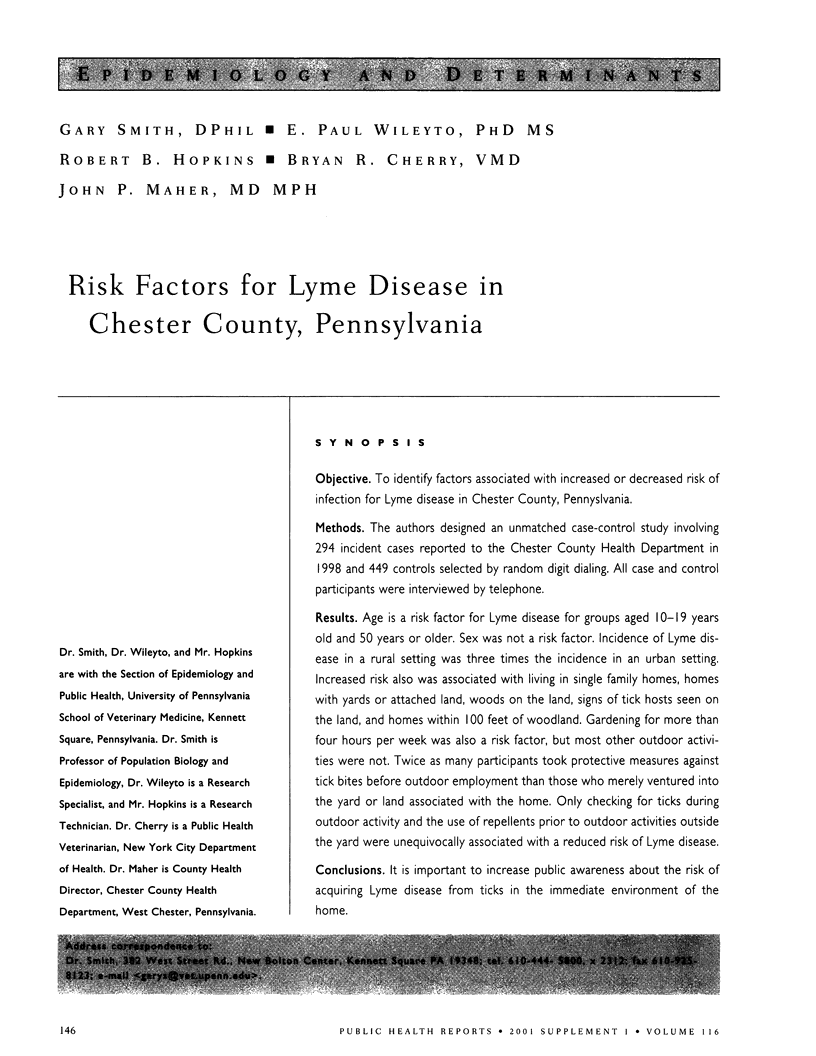
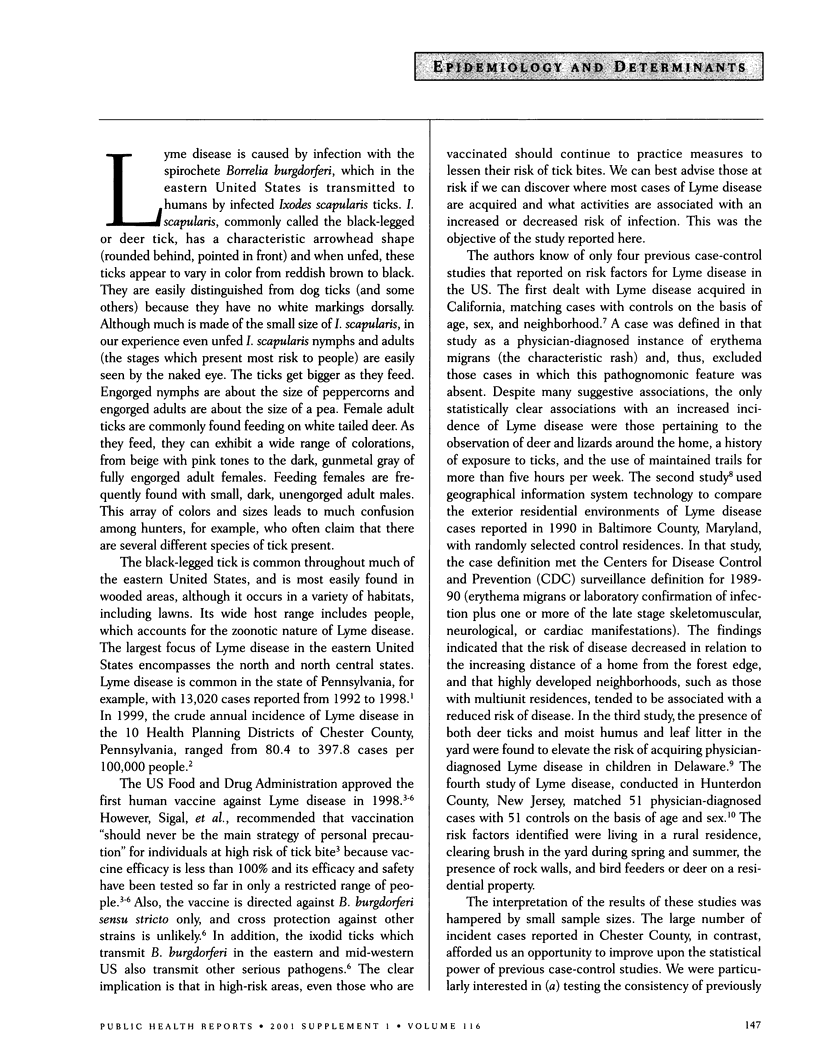
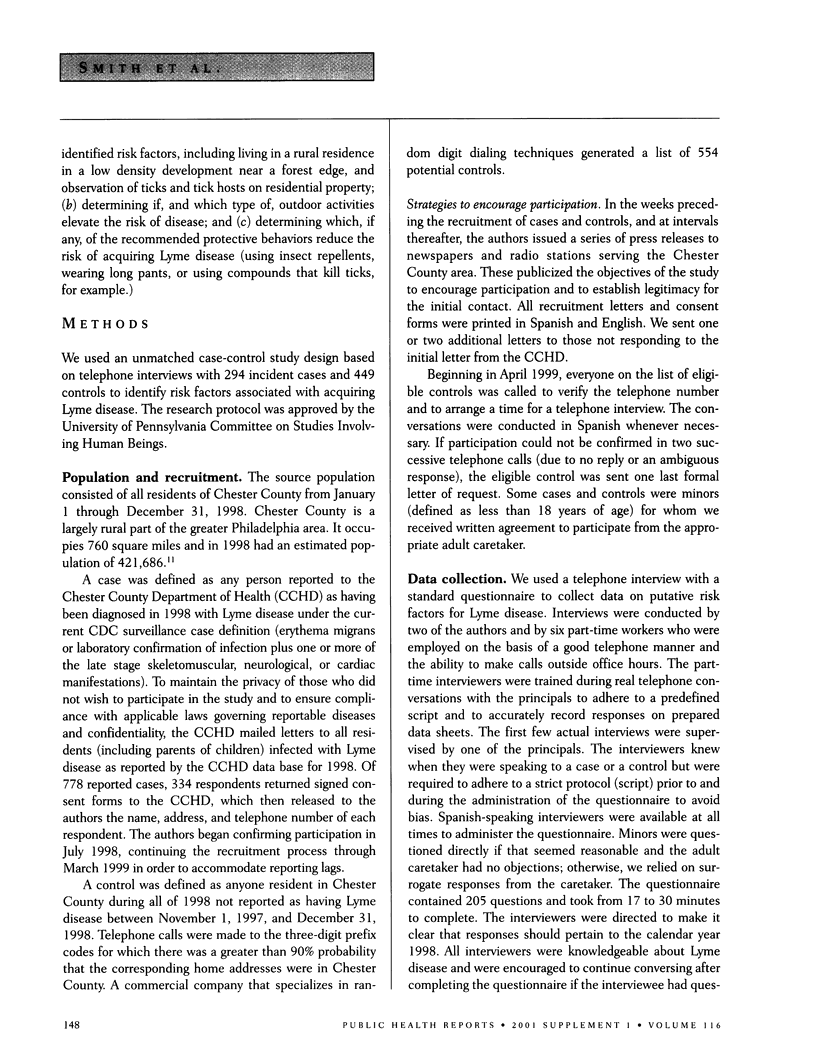

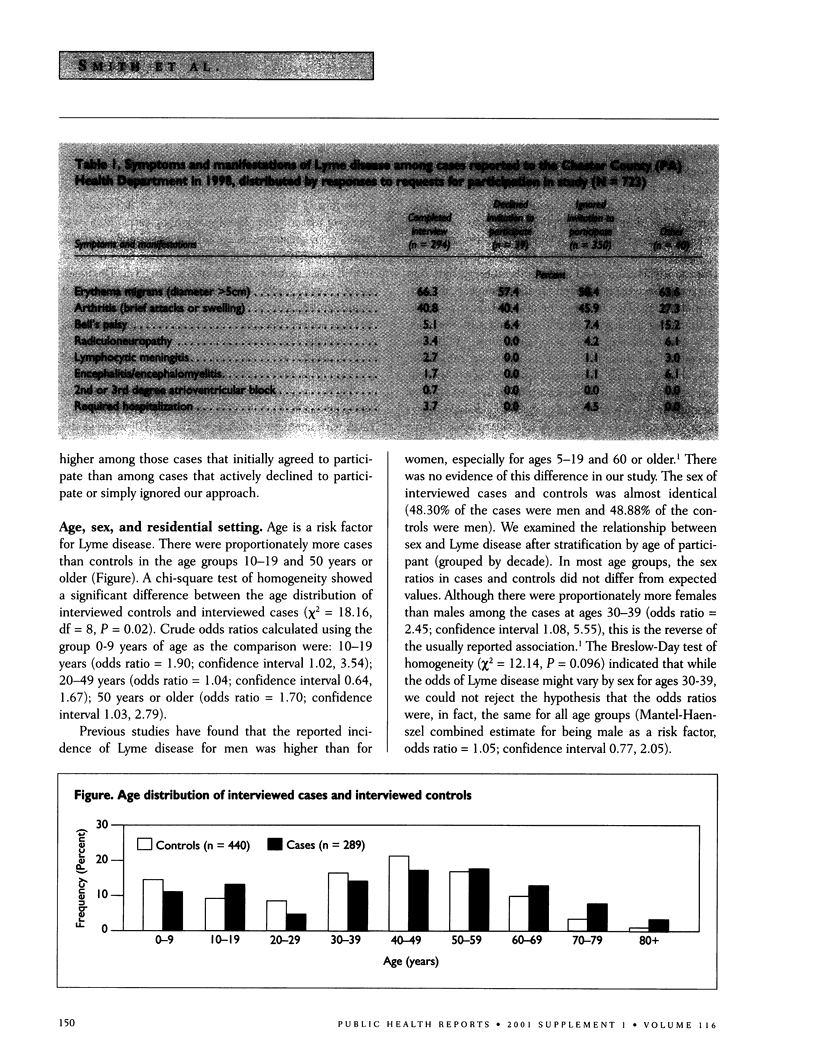
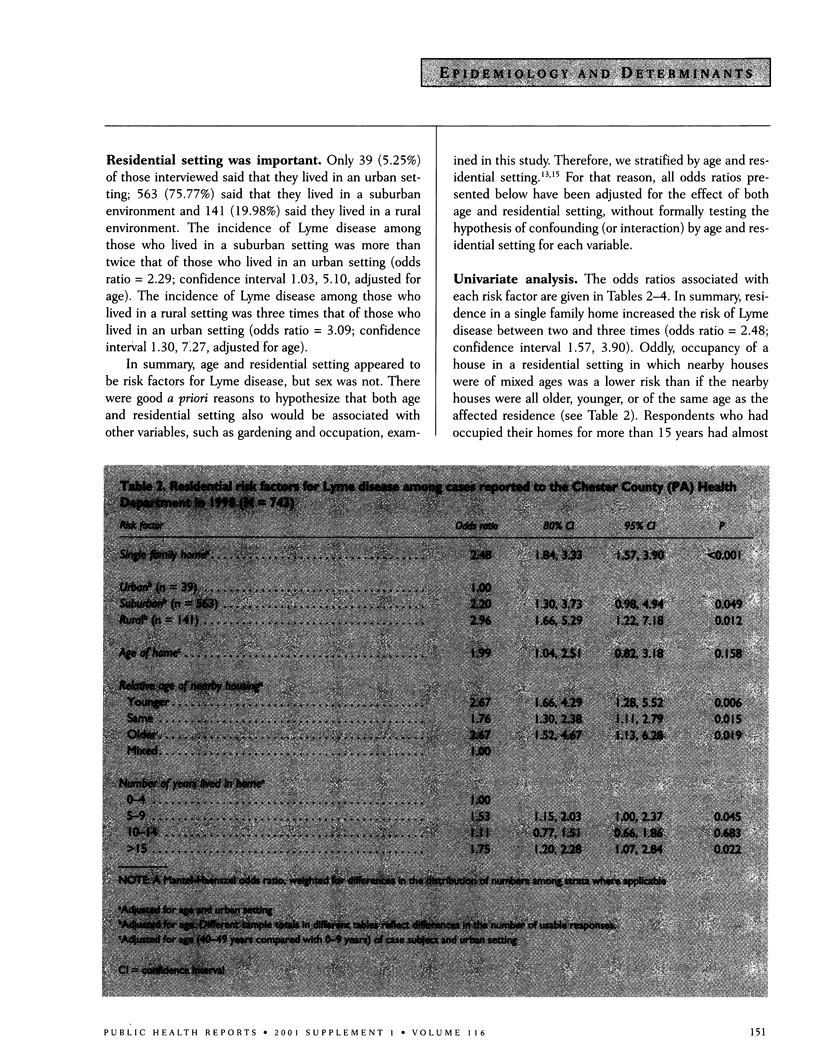
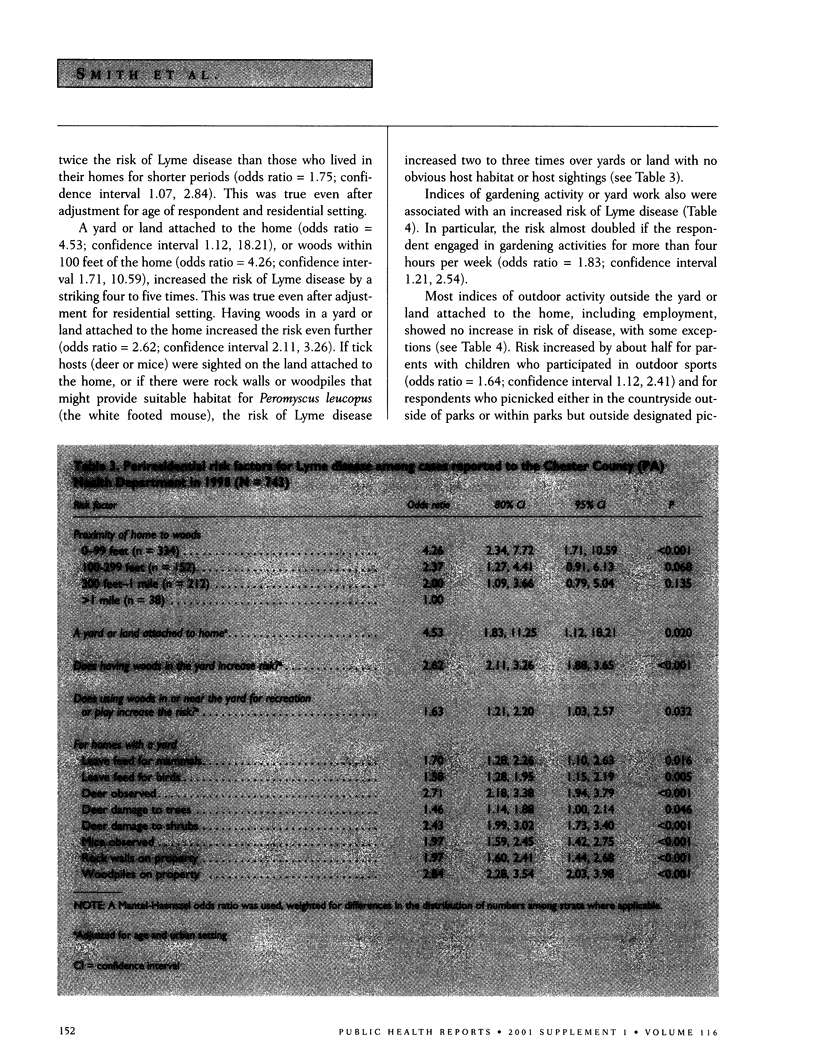
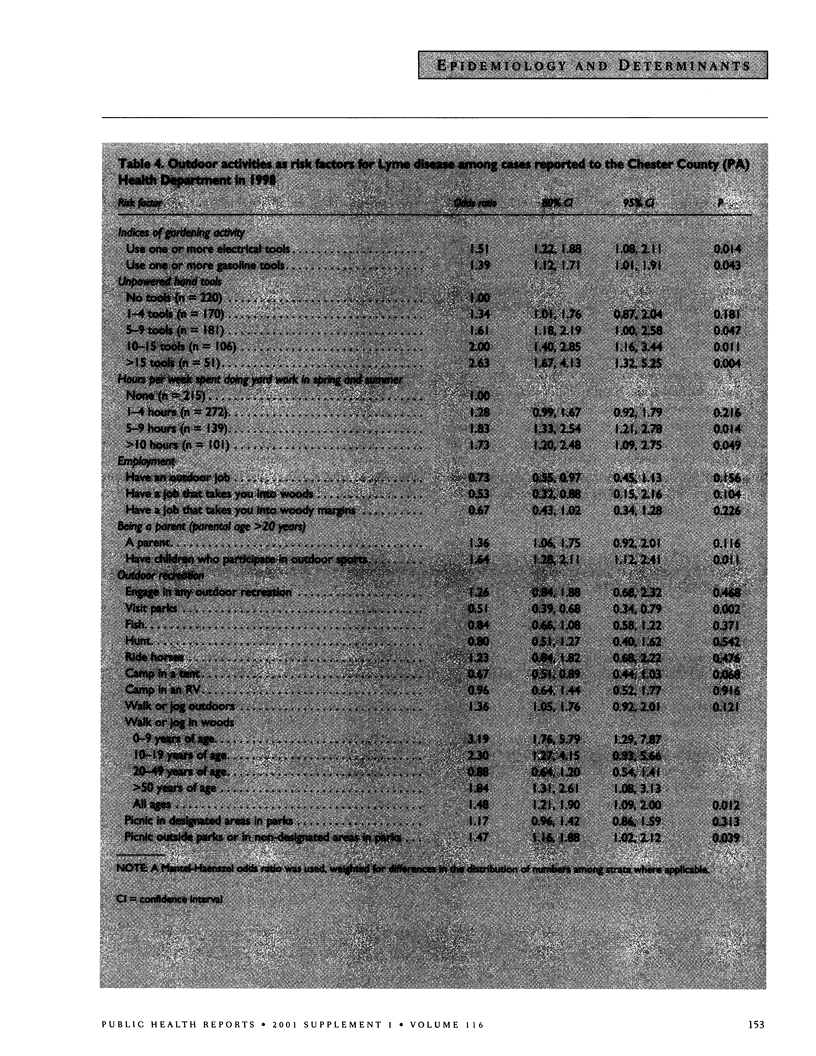
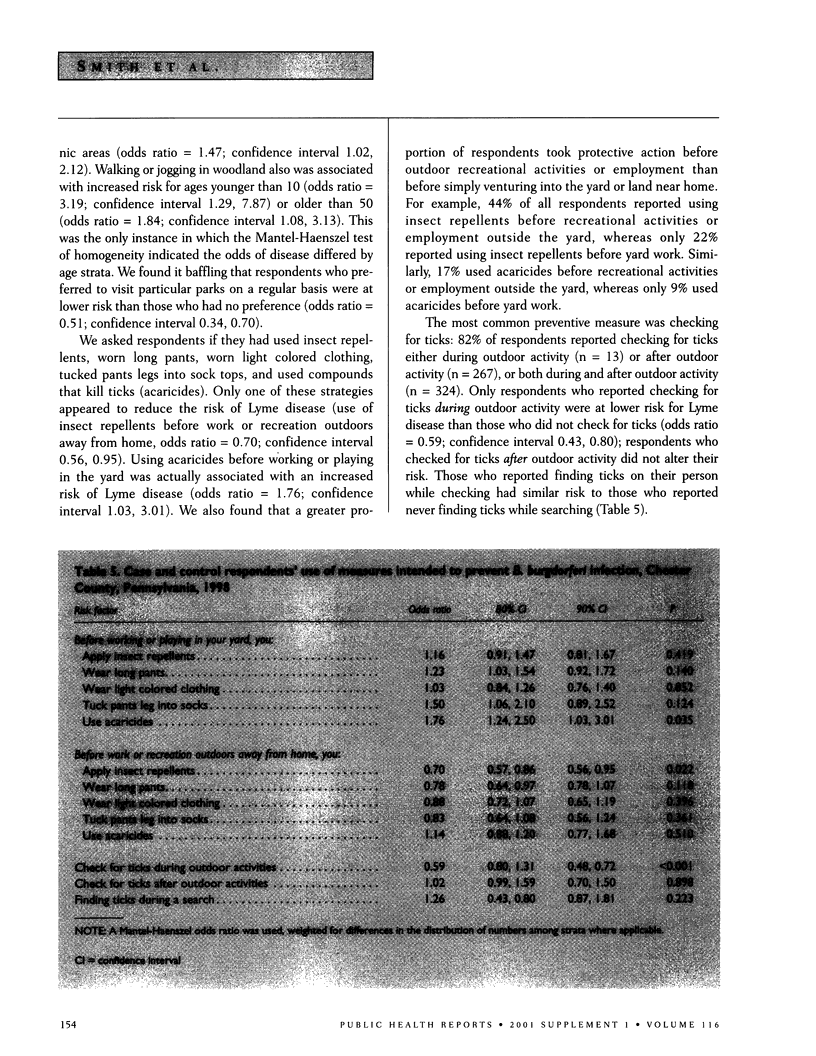
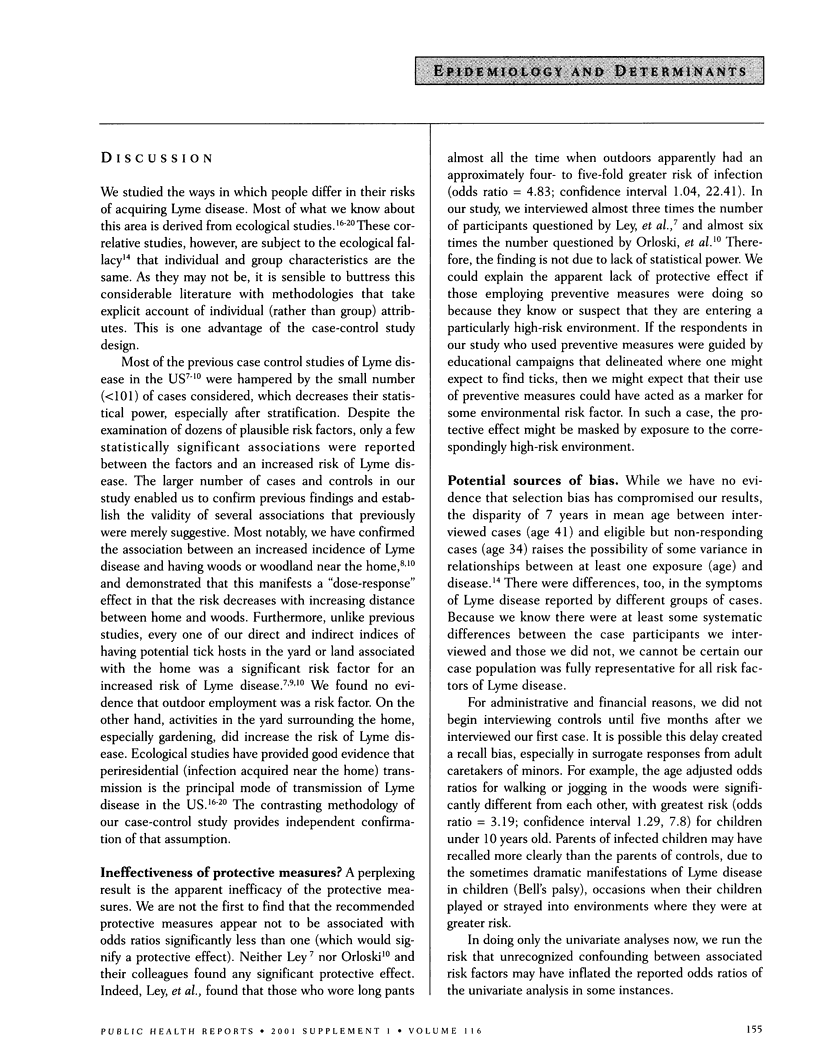
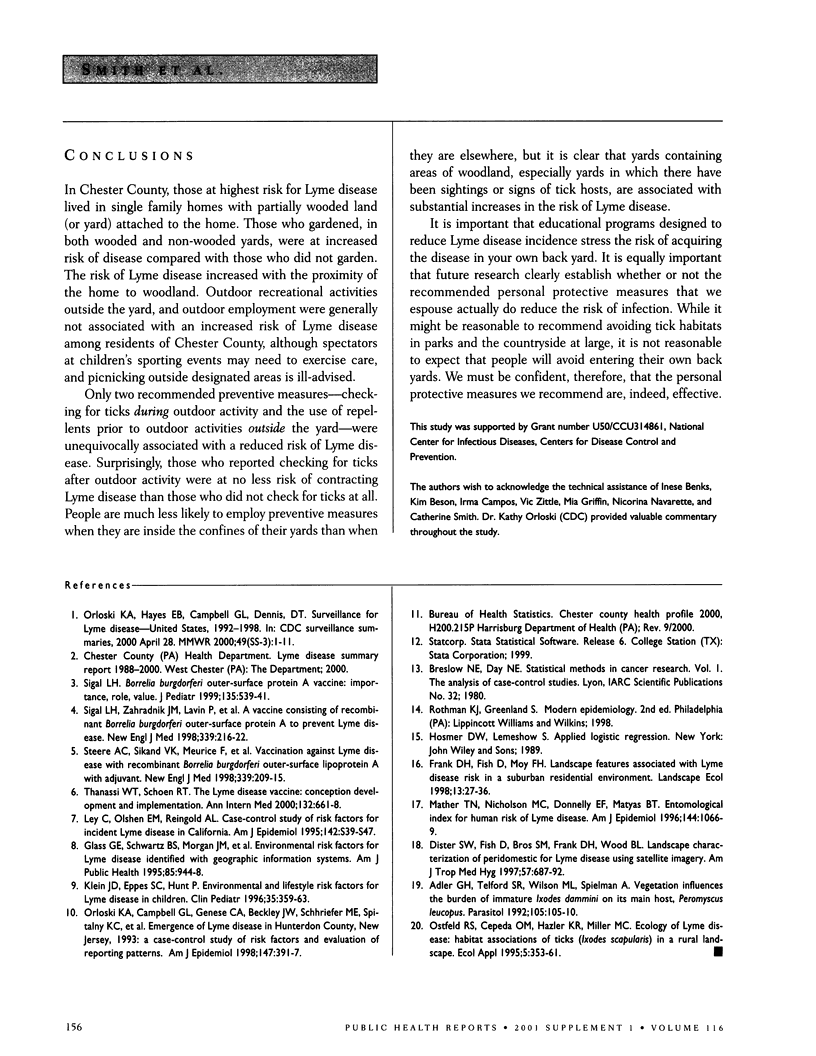
Selected References
These references are in PubMed. This may not be the complete list of references from this article.
- Adler G. H., Telford S. R., 3rd, Wilson M. L., Spielman A. Vegetation structure influences the burden of immature Ixodes dammini on its main host, Peromyscus leucopus. Parasitology. 1992 Aug;105(Pt 1):105–110. doi: 10.1017/s0031182000073741. [DOI] [PubMed] [Google Scholar]
- Dister S. W., Fish D., Bros S. M., Frank D. H., Wood B. L. Landscape characterization of peridomestic risk for Lyme disease using satellite imagery. Am J Trop Med Hyg. 1997 Dec;57(6):687–692. doi: 10.4269/ajtmh.1997.57.687. [DOI] [PubMed] [Google Scholar]
- Glass G. E., Schwartz B. S., Morgan J. M., 3rd, Johnson D. T., Noy P. M., Israel E. Environmental risk factors for Lyme disease identified with geographic information systems. Am J Public Health. 1995 Jul;85(7):944–948. doi: 10.2105/ajph.85.7.944. [DOI] [PMC free article] [PubMed] [Google Scholar]
- Klein J. D., Eppes S. C., Hunt P. Environmental and life-style risk factors for Lyme disease in children. Clin Pediatr (Phila) 1996 Jul;35(7):359–363. doi: 10.1177/000992289603500705. [DOI] [PubMed] [Google Scholar]
- Ley C., Olshen E. M., Reingold A. L. Case-control study of risk factors for incident Lyme disease in California. Am J Epidemiol. 1995 Nov 1;142(9 Suppl):S39–S47. doi: 10.1093/aje/142.supplement_9.s39. [DOI] [PubMed] [Google Scholar]
- Mather T. N., Nicholson M. C., Donnelly E. F., Matyas B. T. Entomologic index for human risk of Lyme disease. Am J Epidemiol. 1996 Dec 1;144(11):1066–1069. doi: 10.1093/oxfordjournals.aje.a008879. [DOI] [PubMed] [Google Scholar]
- Orloski K. A., Campbell G. L., Genese C. A., Beckley J. W., Schriefer M. E., Spitalny K. C., Dennis D. T. Emergence of Lyme disease in Hunterdon County, New Jersey, 1993: a case-control study of risk factors and evaluation of reporting patterns. Am J Epidemiol. 1998 Feb 15;147(4):391–397. doi: 10.1093/oxfordjournals.aje.a009462. [DOI] [PubMed] [Google Scholar]
- Sigal L. H. Borrelia burgdorferi outer surface protein A vaccine: importance, role, and value. J Pediatr. 1999 Nov;135(5):539–541. doi: 10.1016/s0022-3476(99)70048-x. [DOI] [PubMed] [Google Scholar]
- Sigal L. H., Zahradnik J. M., Lavin P., Patella S. J., Bryant G., Haselby R., Hilton E., Kunkel M., Adler-Klein D., Doherty T. A vaccine consisting of recombinant Borrelia burgdorferi outer-surface protein A to prevent Lyme disease. Recombinant Outer-Surface Protein A Lyme Disease Vaccine Study Consortium. N Engl J Med. 1998 Jul 23;339(4):216–222. doi: 10.1056/NEJM199807233390402. [DOI] [PubMed] [Google Scholar]
- Steere A. C., Sikand V. K., Meurice F., Parenti D. L., Fikrig E., Schoen R. T., Nowakowski J., Schmid C. H., Laukamp S., Buscarino C. Vaccination against Lyme disease with recombinant Borrelia burgdorferi outer-surface lipoprotein A with adjuvant. Lyme Disease Vaccine Study Group. N Engl J Med. 1998 Jul 23;339(4):209–215. doi: 10.1056/NEJM199807233390401. [DOI] [PubMed] [Google Scholar]
- Thanassi W. T., Schoen R. T. The Lyme disease vaccine: conception, development, and implementation. Ann Intern Med. 2000 Apr 18;132(8):661–668. doi: 10.7326/0003-4819-132-8-200004180-00009. [DOI] [PubMed] [Google Scholar]


